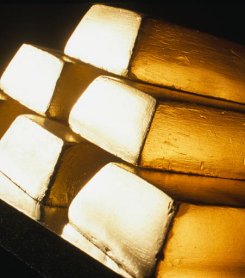
For more than 75 years, gold and platinum have been used to treat rheumatoid arthritis and other autoimmune diseases. How, and why, gold should work in this fashion has remained something of a mystery to medical scientists, but now some canny Harvard Medical School researchers believe that they have pulled back the curtain to reveal how these precious metals perform their healing.
In the February 27 edition of Nature Chemical Biology, the Harvard team explain that gold and some other types of metals – known as medicinal metals – re-jig key proteins that carry samples of invading bacteria and viruses that are used to alert the body’s immune system.
Together with co-researcher Stephen De Wall, DeDecker instigated an extensive search for new drugs that would suppress the function of a central component of the immune system – MHC class II proteins. Under normal circumstances MHC class II proteins hold pieces of invading bacteria and virus on the surface of specialized antigen presentation cells, to then alert specialized recognition cells – called lymphocytes – to begin an immune response. But MHC class II proteins become a liability in diseases such as juvenile diabetes, Lupus, and rheumatoid arthritis when the immune system malfunctions and attacks the host body instead.
By chance, the team observed that a known cancer drug containing platinum, Cisplatin, stripped the MHC class II protein of all invading molecules. Further tests using gold compounds in cell cultures revealed that platinum was just one member of a class of metals that effectively neutralize MHC class II proteins. These findings provide researchers with a mechanism in which to explore the effects of these metals directly on diseased tissue.
It was a German doctor named Robert Koch, who in 1890, first discovered that gold could be used to kill the bacteria that caused tuberculosis. How the metal worked this feat was never really understood, but gold treatments improved over time, with Jacques Forestier successfully concocting a gold drug to treat rheumatoid arthritis in the 1930s. But the use of the gold-based drugs dropped off, as they were fiendishly slow to act, sometimes taking months to work, and often produced wretched side effects.
DeDecker’s new findings represent a new insight into how these medical metals work, and present a new opportunity for researchers to develop metal-based drugs targeting a number of autoimmune diseases.








Comments are closed.